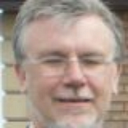Gödel’s Universe: A Mathematical Framework for Time Travel
Introduction:
Kurt Gödel, a renowned mathematician and logician, made significant contributions to various fields, including his work on rotating universes and their implications for time travel. This paper explores Gödel’s Universe model and examines why he believed time travel was theoretically possible within this framework. By analyzing Gödel’s mathematical approach and its relationship to Einstein’s theory of general relativity, we can gain insights into the fascinating intersection of mathematics, physics, and philosophy that emerges from this groundbreaking work.
1. Gödel’s Universe Model:
In 1949, Kurt Gödel proposed a solution to Einstein’s field equations of general relativity that described a rotating universe (Malament, 1984). This model, known as Gödel’s Universe, presented a cosmological solution that allowed for the existence of closed timelike curves (CTCs). These CTCs are paths in spacetime that loop back onto themselves, potentially enabling an object to return to its own past (Pfarr, 1981).
Gödel’s Universe is characterized by several key features:
a) Homogeneity: The universe is the same at every point.
b) Rotation: The entire universe rotates around every point.
c) Dust: The universe is filled with a pressureless perfect fluid, often referred to as “dust.”
2. Mathematical Foundation:
Gödel’s solution to Einstein’s field equations can be expressed in the following metric:
ds² = a²[dt² — dx² + (exp(2x)/2)dy² — dz² + 2exp(x)dtdy]
Where ‘a’ is a constant related to the universe’s matter density and rotation rate (Earman, 1995).
This metric allows for the existence of CTCs, which are central to the possibility of time travel in Gödel’s Universe.
3. Implications for Time Travel:
Gödel argued that the presence of CTCs in his universe model theoretically allowed for time travel. His reasoning was based on the following key points:
a) Causal Structure: In Gödel’s Universe, the causal structure of spacetime is fundamentally altered. The usual distinction between past and future becomes blurred, as events can influence their own past through CTCs (Stein, 1970).
b) Time-like World Lines: Gödel demonstrated that it was possible for a time-like world line (representing the path of an object through spacetime) to return to its starting point in both space and time. This suggests that an object could, in principle, travel back to its own past (Gödel, 1949).
c) No Universal Time: Gödel’s model lacks a universal, well-defined time coordinate. This absence of a global time ordering further supports the possibility of time travel, as it removes the conventional notion of a linear, unidirectional flow of time (Yourgrau, 1991).
4. Philosophical Implications:
Gödel’s work on rotating universes and time travel had profound philosophical implications. He argued that if time travel were possible in any physically realizable universe, it would challenge our fundamental understanding of time itself. Gödel suggested that this possibility cast doubt on the objective existence of time as we typically conceive it (Yourgrau, 2005).
5. Criticisms and Limitations:
While Gödel’s Universe provides a mathematically consistent model for time travel, it faces several criticisms:
a) Physical Realism: The rotating universe model does not appear to match our observed universe, which shows no evidence of global rotation (Ellis, 1996).
b) Causality Violations: The possibility of time travel raises paradoxes and potential violations of causality, such as the grandfather paradox (Earman, 1995).
c) Energy Conditions: Gödel’s solution violates certain energy conditions typically assumed in general relativity, which may limit its physical relevance (Hawking and Ellis, 1973).
Conclusion:
Gödel’s Universe represents a groundbreaking exploration of the mathematical possibilities inherent in Einstein’s theory of general relativity. By demonstrating the theoretical possibility of time travel within a consistent mathematical framework, Gödel challenged our fundamental understanding of time and causality. While his model may not directly describe our physical universe, it continues to inspire discussions and research at the intersection of mathematics, physics, and philosophy. Gödel’s work serves as a testament to the power of mathematical reasoning in probing the deepest questions about the nature of reality and time.
References:
Earman, J. (1995) Bangs, crunches, whimpers, and shrieks: Singularities and acausalities in relativistic spacetimes. New York: Oxford University Press.
Ellis, G.F.R. (1996) ‘Contributions of K. Gödel to relativity and cosmology’, in Hafner, P. and Sigmund, K. (eds.) Kurt Gödel: Wahrheit und Beweisbarkeit. Vienna: Hölder-Pichler-Tempsky, pp. 325–343.
Gödel, K. (1949) ‘An example of a new type of cosmological solutions of Einstein’s field equations of gravitation’, Reviews of Modern Physics, 21(3), pp. 447–450.
Hawking, S.W. and Ellis, G.F.R. (1973) The large scale structure of space-time. Cambridge: Cambridge University Press.
Malament, D. (1984) ‘’Time travel’ in the Gödel universe’, PSA: Proceedings of the Biennial Meeting of the Philosophy of Science Association, 1984(2), pp. 91–100.
Pfarr, J. (1981) ‘Time travel in Gödel’s space’, General Relativity and Gravitation, 13(11), pp. 1073–1091.
Stein, H. (1970) ‘On the paradoxical time-structures of Gödel’, Philosophy of Science, 37(4), pp. 589–601.
Yourgrau, P. (1991) The disappearance of time: Kurt Gödel and the idealistic tradition in philosophy. Cambridge: Cambridge University Press.
Yourgrau, P. (2005) A world without time: The forgotten legacy of Gödel and Einstein. New York: Basic Books.
Article written by Claude 3.5 Sonnet with Harvard citations and references requested.
